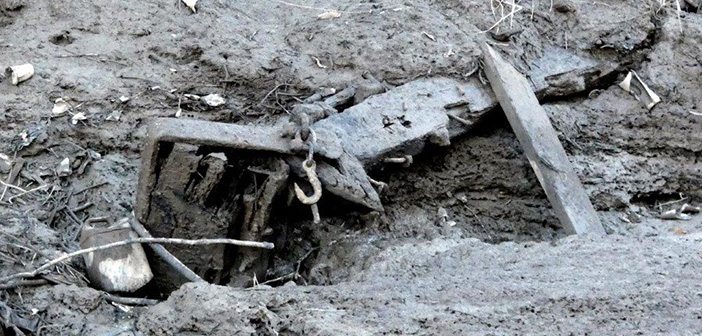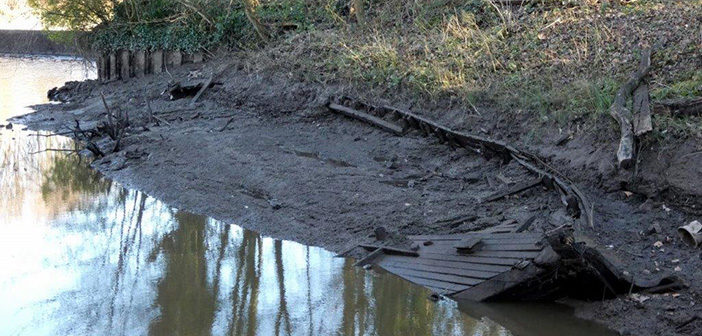RECENT works on the River Mersey, resulting in lower water levels, revealed a glimpse into Warrington’s historic past when the remains of a “Mersey Flat” came into view.
Following a tip-off members of the New Cut Trail group, including local history enthusiast Mike Kenwright, went off to investigate after the Mersey Flat had come to light at Howley Lock while the river level was dropped to allow maintenance work.
The flat could be viewed from the stern with the rudder still attached along with what remained of the stem, a metal strip and hook which is attached to the stem at the anchor point for the mast forestay.
Mike said: “If I have got it right the angled metal bar would have been bolted over the prow and the hook that is fixed to it may have been part of the gear for holding the mast stay. The masts of the vessels could be lowered allowing them to pass under low bridges. They would have needed a secure anchor when they were upright with the vessel under sail, hence the metal bar over the prow. Of course I could be totally wrong with my ideas!
He added: “Most of the flats were single-masted but some of them carried two masts, and were often called “Jigger Flats”. These Jigger Flats were sea-going vessels and were regularly worked on the Irish Sea, some of them sailed round the coast to London with cargoes of Cheshire Cheese
The last sailing flat to be built was the Santa Rose (Pictured being launched below). It was built for the United Alkali Company Ltd.
Mike added: “These sailing barges were named Flats due to the fact that they had very little keel and a rounded flat bottom.
“In areas where there was no harbour or wharf but there were flat sandy beaches the vessels could be sailed into shallow water at high tide and allowed to settle on the beach as the tide ebbed. Horse-drawn lorries and carts could then pull alongside and the cargo would be discharged into them.
“Depending on the type of cargo it could often take more than one tide to finish the unloading. When the job was done the flat would lift on the tide and could be sailed away.
“When sat on a good level beach the Flatmen reckoned that they sat upright like a church steeple.
“On inland waterways, masts and sails were often dispensed with and the vessels towed for the whole journey. In the early days when towpaths were poor or even non existent in places teams of men did the hauling.
“Later when proper towpaths were constructed horses were used, sometimes in pairs.
“The Mersey and Irwell Co built stables for their horses at Runcorn, Manor Lock at Latchford, Cadishead and Barton,” added Mike.
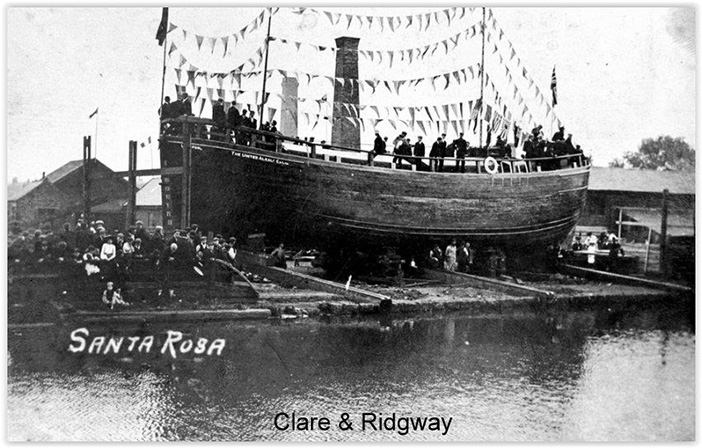
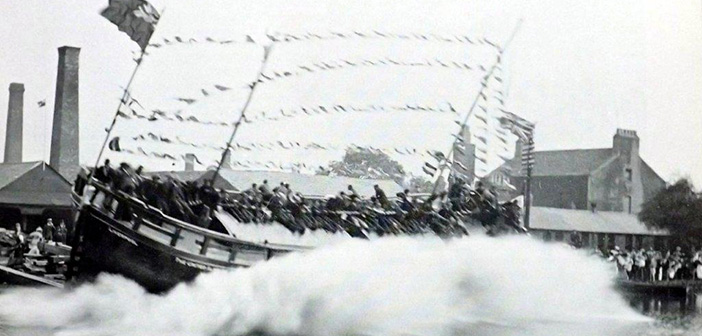
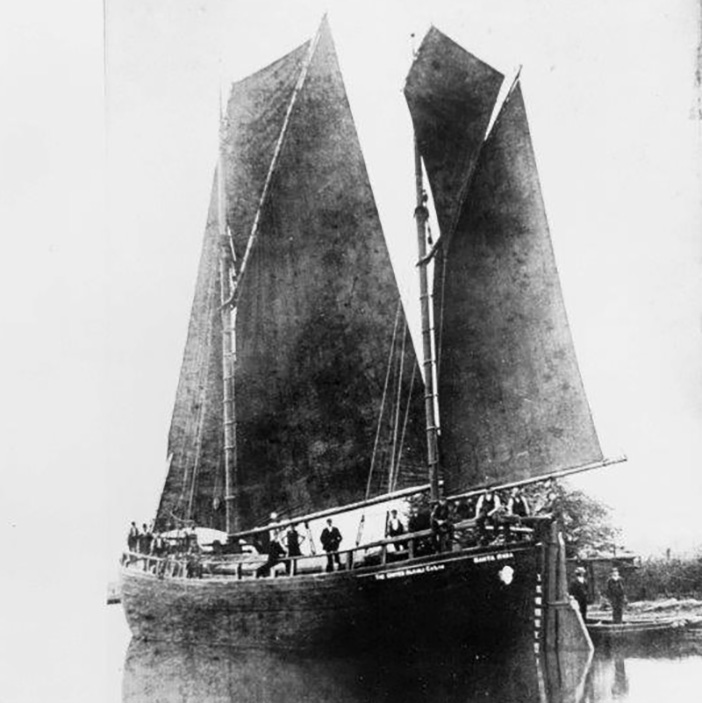
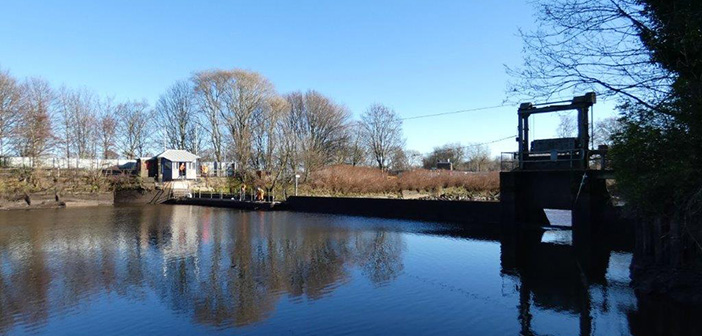
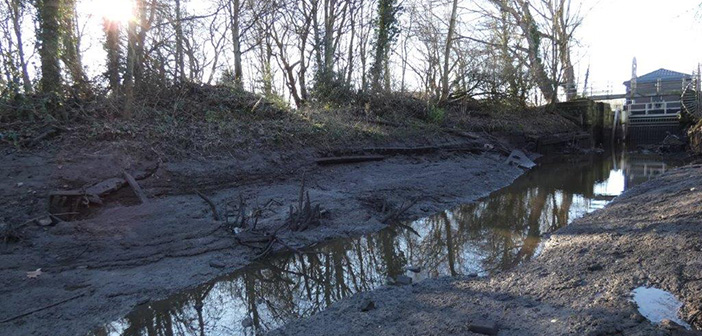
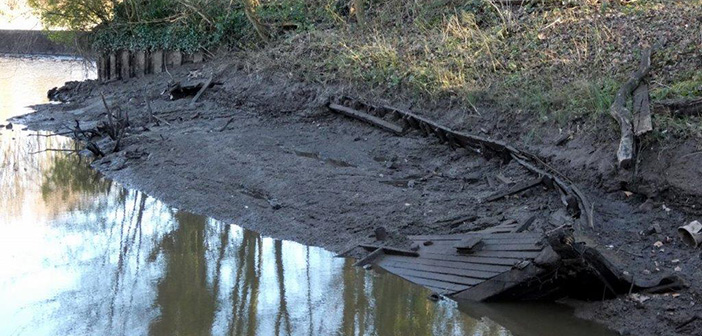
The remnants of a flat boat revealed in the mud
